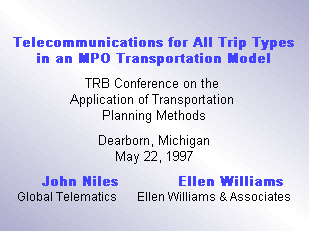
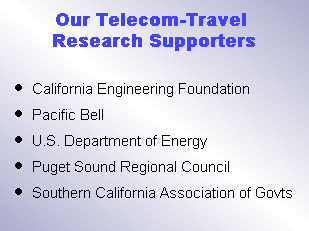


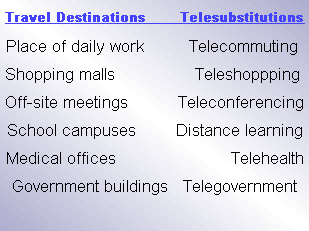


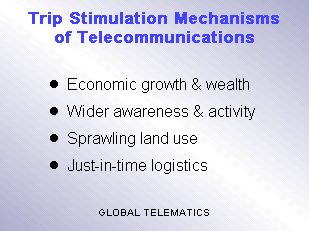
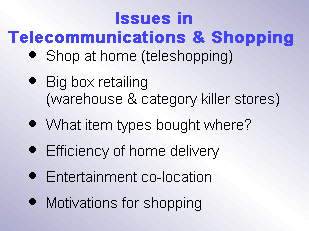
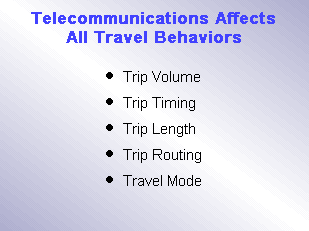
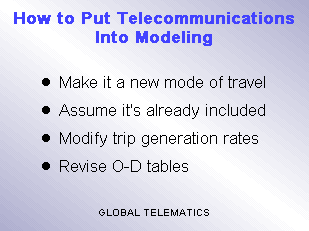


Voice, data, and video telecommunications usage are now growing rapidly for all kinds of service delivery, including government, education, banking and brokerage, health care, retail shopping, real estate, and tourism. Teleservices delivered via telemarketing centers, teller machines, kiosks, web sites, wired classrooms, video conferencing rooms, and telemedicine networks change the patterns of customer movement as surely as teleworking changes patterns of commuting and business meetings for workers.
Telecommunications is both a substitute for travel, and a stimulant of travel. Local government transportation planning still mostly assumes that the impact of telecommunications on travel is neutral, because planners cannot yet sort out what the impacts are and how they should he included in the typical four-step travel model.
The authors have begun to address telecommunications impacts on travel and travel modeling in an ongoing series of projects, beginning with the Metropolitan Planning Organizations (MPO) serving metropolitan Seattle-Tacoma and Southern California. Telecommunications has the potential to change the volume destination, length, routing, and mode of trips. Ways of inserting telecommunications into models include the unsatisfactory alternatives of making telecom a "mode of travel," or assuming that it is already implicit in properly calibrated trip generation tables.
Studying emerging applications of telecommunications in the same way telecommuting has been studied to discover the prospect for dramatic, policy-driven future changes in trip generation rates and in origin-destination tables seems more productive. The results of these studies could then be used to modify the appropriate steps in existing and future transportation models. This is the essence of the Southern California Telecommunications Deployment Strategy, an officially adopted policy of this six-county urban region.












